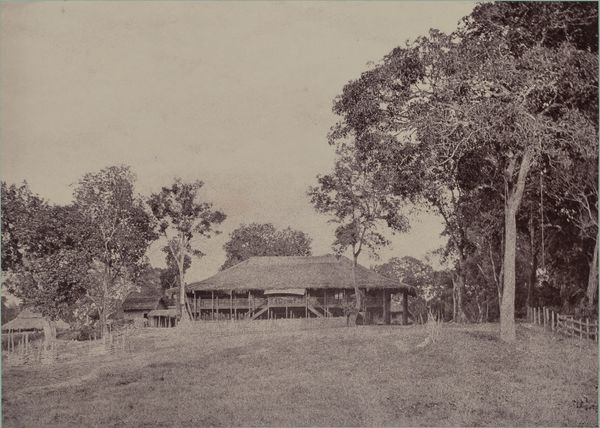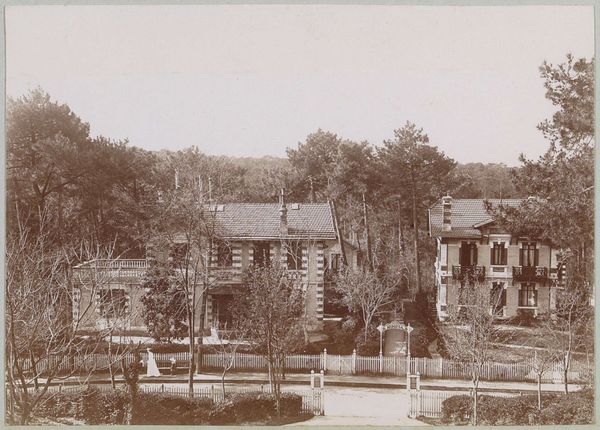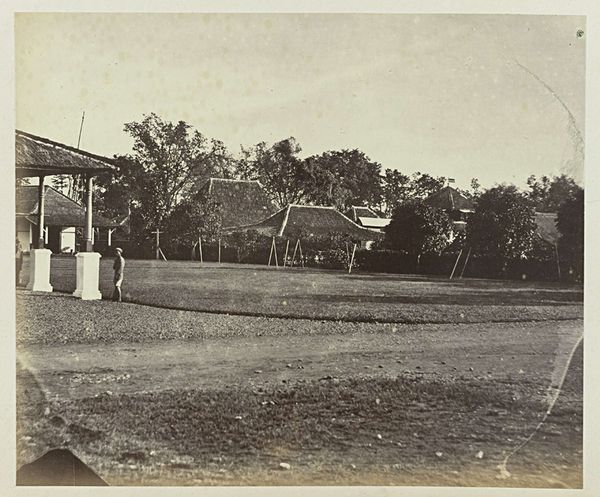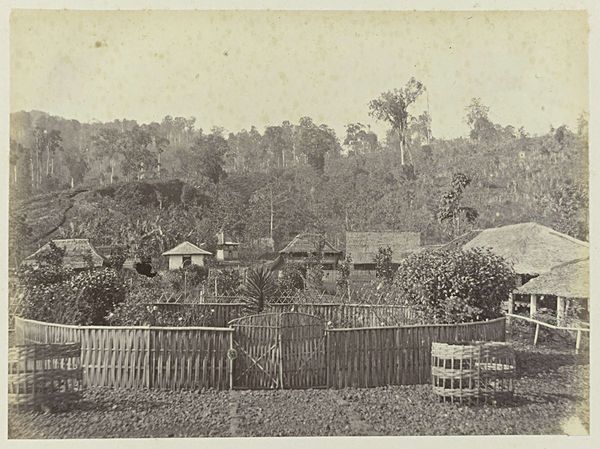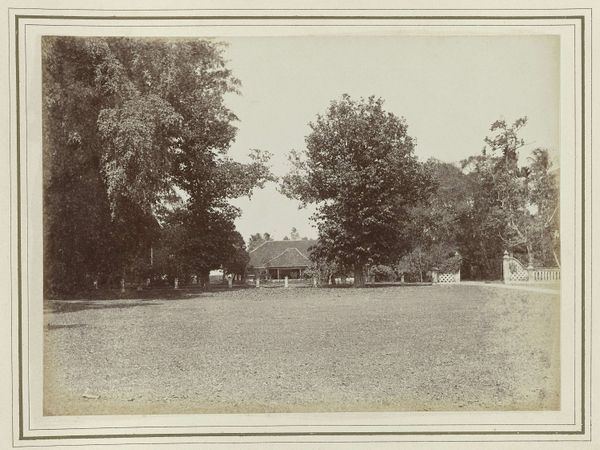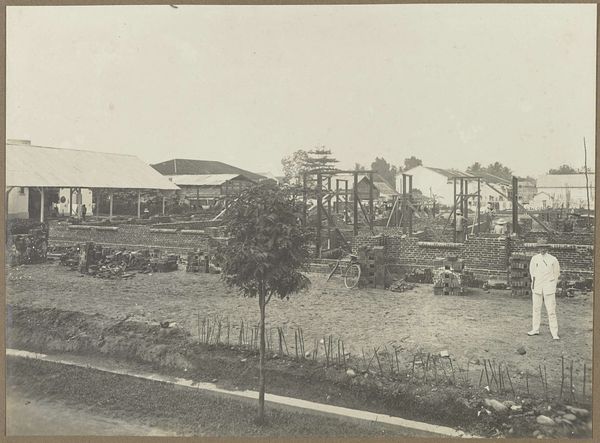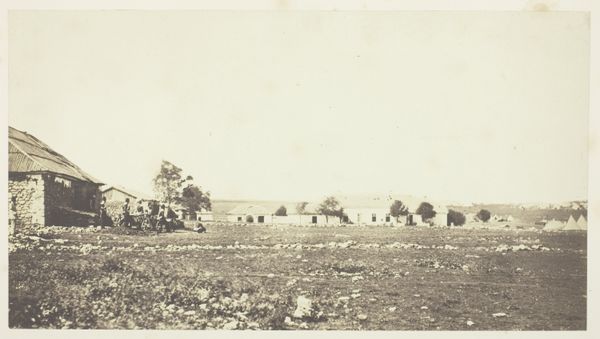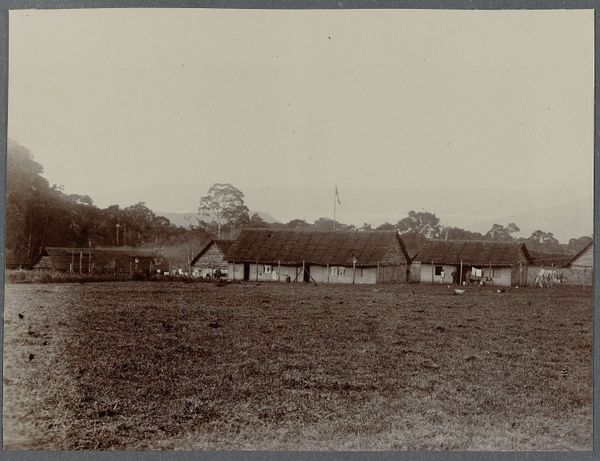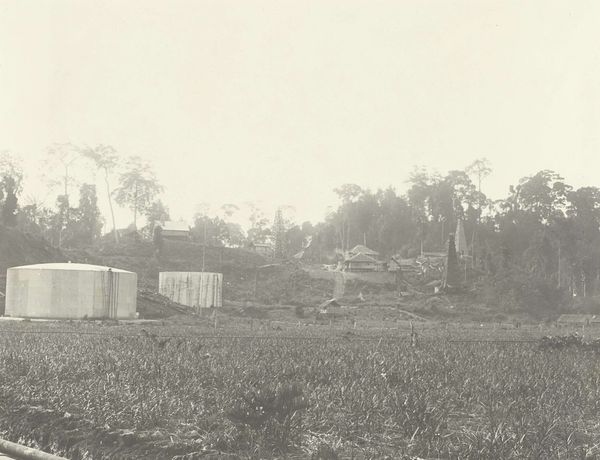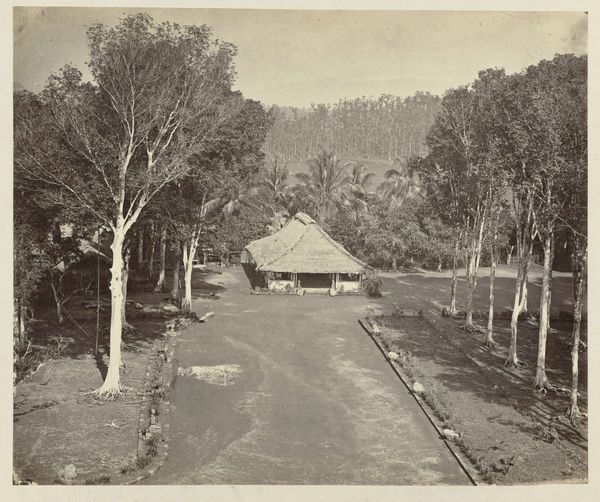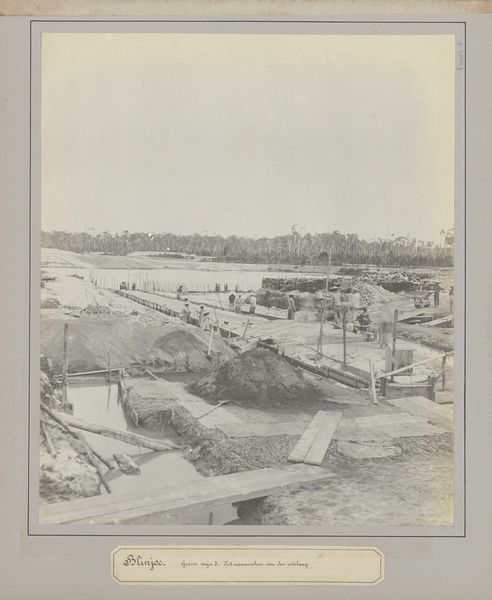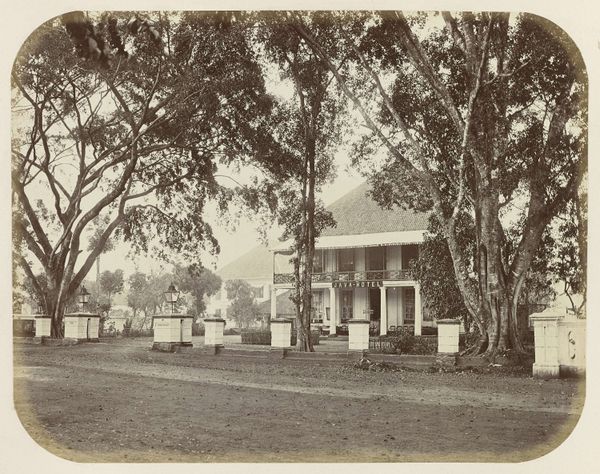
photography
#
landscape
#
photography
#
united-states
#
realism
Dimensions: 6 1/16 x 8 1/4 in. (15.4 x 20.96 cm) (image)10 x 12 in. (25.4 x 30.48 cm) (mount)
Copyright: Public Domain
Curator: Well, what do we think of this slice of history captured by Benjamin Franklin Upton? "Old Government Flour Mill," dating back to 1857. The way the water is captured makes it look more like smoke... very dreamy for such a potentially industrious scene. Editor: Industrial indeed. What strikes me is the latent violence – both the physical force needed to harness the river for labor and the subtle visual cues suggesting colonial power over the landscape. Curator: Violence? I feel like that is maybe too on the nose. To me, that romantic sensibility overwhelms those potential critiques – Upton seemed enchanted, especially considering the new technology in photography. It's a relatively fresh invention at this point, yes? Editor: Certainly. But landscape photography in the mid-19th century was never merely documentation, right? It’s inevitably intertwined with expansionism, dispossession, and the romanticization of “untamed” nature being reshaped for economic gain. Note the structural scaffolding that juts aggressively toward the viewer, a visual embodiment of imposed order. Curator: Well, but isn't that part of seeing progress? This is surely meant as progress. Plus, doesn’t it feel balanced somehow? Like a conversation? The straight, hard lines meet the wilder water and tangle of land – maybe it feels like humanity in nature? Editor: I see your point about the balance. But I'd counter that this very composition serves a purpose – reassuring viewers of humanity's ability to tame and control its environment, particularly as the United States actively displaced indigenous communities. Curator: I do appreciate seeing both lenses now. Still, I am really charmed by how that fast-flowing river is suspended almost into mid-air with its almost otherworldly cloud-like quality. To think this moment, of both change and structure, was caught right there is fascinating. It feels rare. Editor: Agreed – its visual impact is powerful. And placing the flour mill, a source of sustenance, against that backdrop reminds us to question narratives of progress and who exactly benefits. It underscores art’s crucial function as witness and instigator. Curator: Precisely, prompting a deeper reflection, which to me, is always its magical spark. Editor: Yes, and hopefully a call to reexamine inherited ideals of progress and the land.
Comments
minneapolisinstituteofart almost 2 years ago
⋮
This eight-part panorama provides a view of over 180 degrees, up and down the Mississippi River from what was then the town of Saint Anthony. The picture at the far right centers on a new church, now Our Lady of Lourdes located behind River Place. The next image to the left depicts most of Nicollet Island and, on the far side, the wooden suspension bridge that fed into downtown Minneapolis at Hennepin Avenue. Continuing to the left, the photographs capture Saint Anthony Falls, the milling district, and land on which the University of Minnesota would later build. To make the series, Upton set up his camera on the roof of the Winslow House, a hotel that had just opened but was demolished before the end of the nineteenth century.
Join the conversation
Join millions of artists and users on Artera today and experience the ultimate creative platform.
